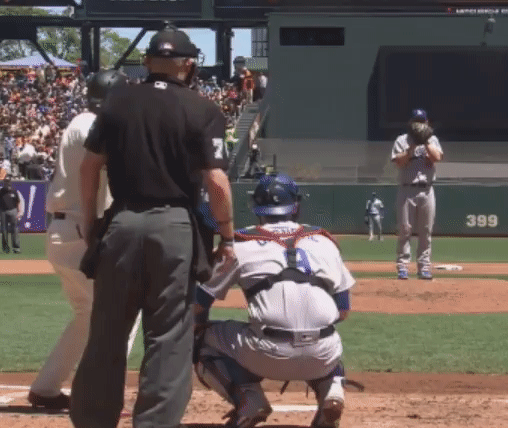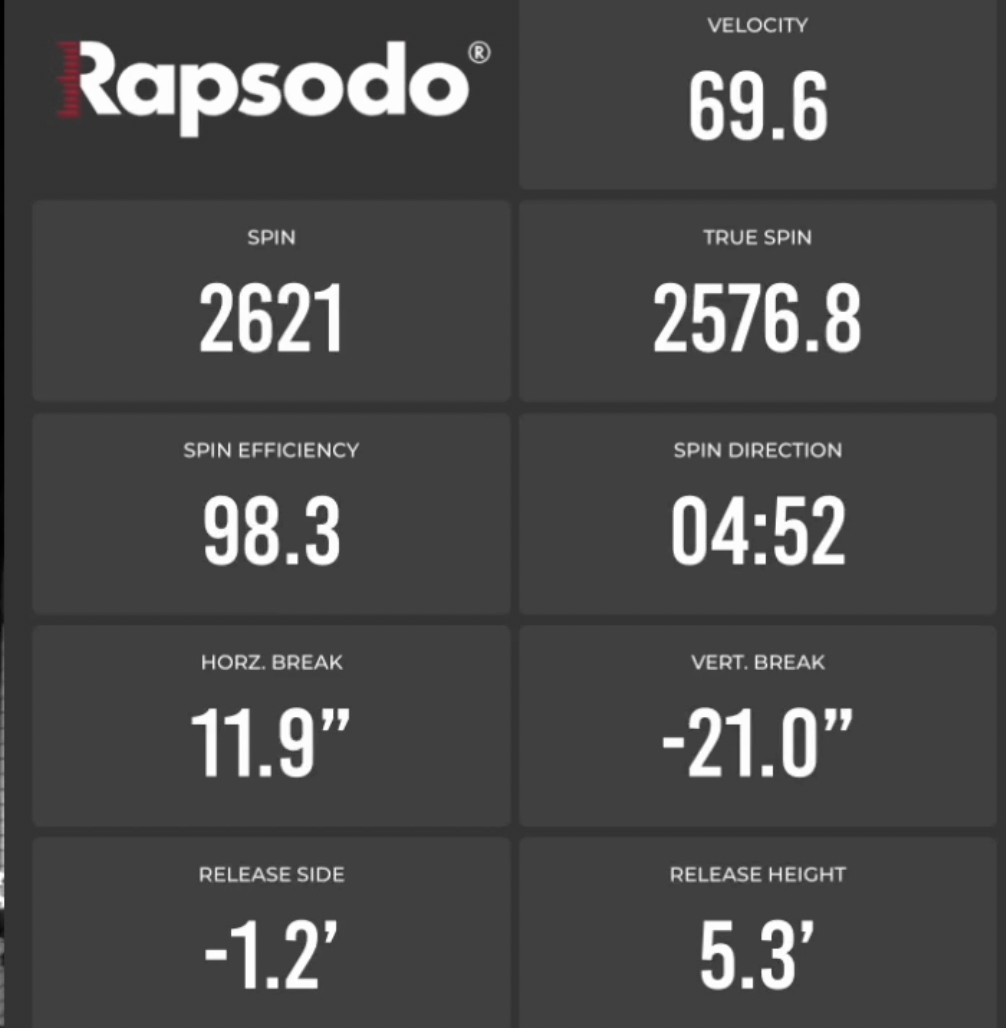
Welcome to the “How to” series on pitching, where we will be diving into various pitches and speak about different grips, cues, tips, movement profiles, and even a top MLB comparisons for reference when looking at a given pitch. First up, how to throw a curveball.

Curve Ball Overview
The curveball is a staple off-speed for pitchers to add to their arsenal. Generally speaking, a curveball will have a higher spin rate, but be thrown anywhere from 10-15 MPH slower than the fastball. The increase in spin rate, in addition to the axis the pitch is thrown on, will cause the pitch to break, or “curve” much differently than any other pitch. Having a specific pitch that breaks differently and slower than the fastball can disrupt a hitters timing and throw off their approach at the plate. Ideally, the pitcher will tunnel the curveball off the fastball, making both pitches look similar out of ball release to create an aspect of deception with the pitch.
In this article, we will be taking a deep dive into how to throw a curveball with a few different grips and cues to help you throw it more effectively and efficiently.
Before we talk about the tips and tricks on how to throw a curveball, lets continue to discuss how we want this pitch to move.
Typically speaking, we look for a curveball to possess more vertical movement (drop) than horizontal movement (sweep). However, this won’t always be the case based on the pitchers arm slot. A pitcher with a higher arm slot will create a more “12-6” curveball that has more vertical break than horizontal break. As the arm slot of the pitcher gets lower, the more horizontal movement the pitch will have.

-
- True Curveball – VB > HB
- True Slider – VB < HB
- Slurve (CB/SL combo) – VB = HB
Interested in learning more about remote programs, you can simply click below to schedule a phone call.
Curveball Grips
Now let’s discuss how you grip it and throw it. This is a typical curveball grip. The middle and index finger are held together, pressed up on the seam. The thumb is placed opposite of the middle finger, and hugs the seam on the bottom of the ball. The ring and pinky fingers rest off to the side of the ball. The location of the middle and index finger pressed up on the seam, enhances the ability to “rip down” on baseball… allowing for more spin, movement, and depth on the pitch.
Typical Curveball Grip
Another widely used curveball grip is the “spiked” curveball. This grip is essentially a variation of a typical curveball grip but with the index finger “spiked”, or pressing, on the ball instead of assuming its position next to the middle finger. There are a couple of reasons why some pitchers prefer this grip, and feel, over the traditional curveball grip…
Spiked Curveball Grip
Having the index finger pressing into the baseball, the “spiked” grip forces the pitcher to maintain more of a stiff wrist and focus more on their middle finger pressure through ball release. This helps with maintaining a good hand path through the pitch which helps with overall direction and could also create more of a “ripping” or “pulling” feel for the middle finger to come off the ball.
For an expanded discussion on curveball pitching grips click here.
Cues to Help you Throw a Curveball
Lets start with this… throwing cues are NOT ONE SIZE FITS ALL!!
There are many different cues that people use when teaching pitchers how to throw each pitch. You need to find which cue best suits YOU and helps YOU throw your curveball more effectively.
Some of the cues that we like to tell our guys are:
-
- Throw your pinky at the target
- Rip down on the seam with the middle finger
- Come over the ball
Curveball Data: What we like… What we don’t like… (Specifically for athletes who have access to data tracking devices such as Rapsodo, Trackman, Pitch Logic, etc.)
What we like to see:
-
- Spin efficiency at 65%+
- Relatively consistent spin axis from pitch-to-pitch
- Consistent spin efficiency
- Velocity drop vs. 4-seam of about 10-15 mph
- Greater VERTICAL drop than HORIZONTAL
How to throw a curveball – What we don’t like to see:
-
- Spin efficiency lower than 50% (as it begins to approach a slider)
- Velocity drop in excess of 16+ mph
- Somewhat inconsistent spin-axis from pitch-to-pitch
- Somewhat inconsistent spin-efficiency from pitch-to-pitch
Tunneling Tips and When and Where to Throw a Curveball
The curveball is a great pitch to play off a 4SFB. Whether it be early on in a count to disrupt a hitter’s timing or following a 4SFB to deceive the hitter and generate a swing and a miss; both are effective in competition. The curveball plays so well off the 4SFB due to both pitches operating in the vertical plane. Typically, a good 4SFB has (+) vertical break, and a good curveball will have (-) vertical break. This means a pitcher can make both pitches look very similar out of release point and during the first part of decent towards the plate.
Our suggestions for best times to throw a curveball:
-
- 0-0 – to get ahead, and disrupt the hitters timing
- 1-0 – when the hitter is expecting a fastball
- 1-2 – trying to generate a swing and miss pitch for a strikeout
Example of an Elite MLB Curveball – Max Fried
Max Fried throws an ELITE curveball. It is one of the slower curveballs in the MLB, at 75 MPH it has ridiculous drop and vertical movement. Last season, Fried’s curveball produced a .174 BA, .199 wOBA, 40.2 whiff %, and a 39.7 K%. You can see how Fried’s curveball would play well off a 4SFB thrown in the upper part of the zone. He is a great example when looking at the type of curveball to emulate.
By Jake Lebovitch (Pitching Coordinator, Strength Coach at RPP Baseball)
Articles in the How to Throw series:
You live too far to train with us in-house at RPP? You can now train with us on a REMOTE basis.


